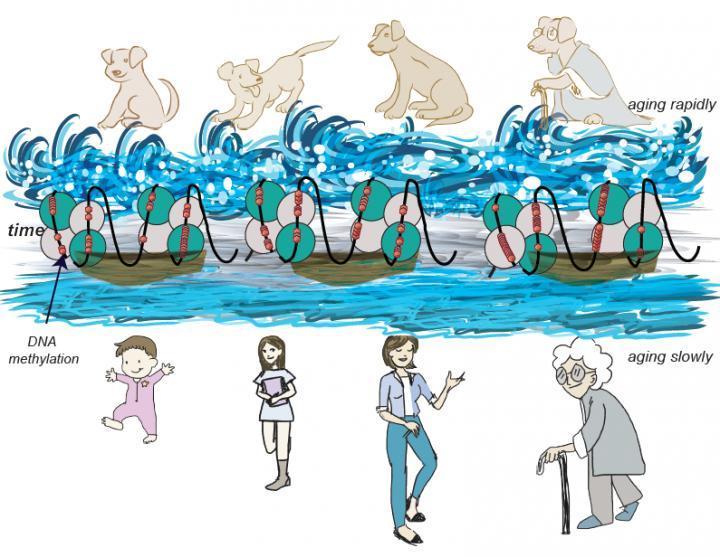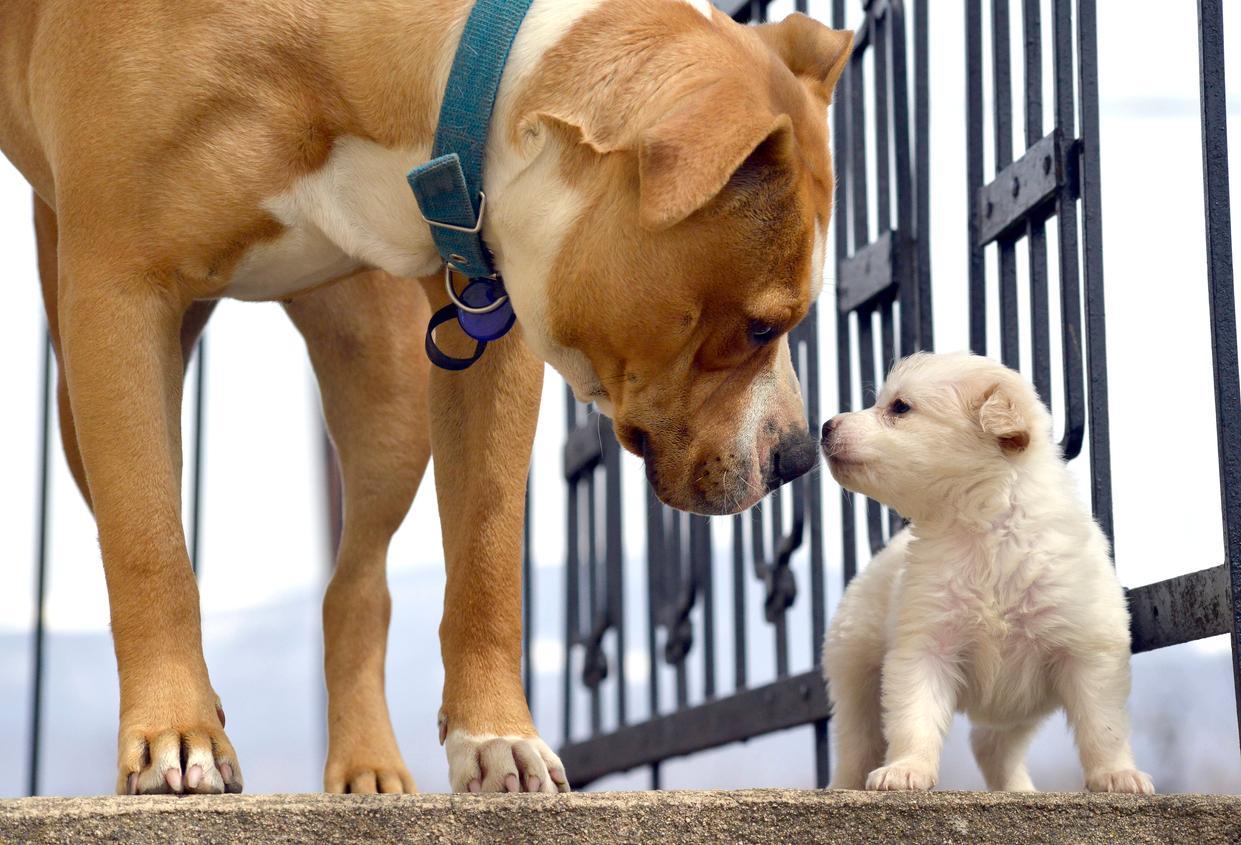
A 1-year-old dog is more like 30 in human years, not 7, research shows
By Mark PygasJuly 24 2024, Updated 4:05 p.m. ET
Dogs live for between 10 and 13 years on average. But many of us go by a well-known "rule of paw" that one dog year equates to 7 human years. So, if man's best friend got the grand old age of 10, dog lovers would consider that animal to be 70.
But according to new research, that comparison simply isn't accurate. Researchers at the University of California, San Diego, revealed in a study published in the journal Cell Times that a 1-year-old dog is more "like a 30-year-old human," while a 6-year-old dog would be the human equivalent of about 60 years old.

According to a press release, "dogs are much older than we think." Senior author Trey Ideker and other researchers set out to devise "a more accurate formula to calculate a dog's age based on the chemical changes in the DNA as organisms grow old."
"Dogs share the same environment as their owners and receive almost the same standard of health care as humans, providing a unique opportunity for scientists to understand aging across species," the press release explained.
"Like humans, dogs follow similar developmental trajectories that lead them to grey and become more susceptible to age-related diseases over time. However, how they age on a molecular level is more complicated--aging rapidly at first and slowing down later in life."
"In terms of how physiologically mature a 1-year-old dog is, a 9-month-old dog can have puppies. Right away, you know that if you do the math, you don't just times seven," says Ideker. "What's surprising is exactly how old that one-year-old dog is--it's like a 30-year old human."

While human and dog DNA does not change much throughout life, chemical marks on the DNA known as methylation marks, do. Ideker considers these changes to be "wrinkles."
"I tend to think of it very much like when you look at someone's face and guess their age based on their wrinkles, gray hair, and other features," he said. "These are just similar kinds of features on the molecular level."
For the study, researchers examined 104 Labrador retrievers, with ages ranging from few-week-old puppies to 16-year-old dogs. Yes, science is tough, but someone's got to do it. In all seriousness, though, the team of canine experts was looking for changes in the methylation pattern of the animals and comparing them to humans.
They were able to create a new formula that more accurately matches the ages of dogs and humans:
A dog's human age = 16 ln * (your dog's age) + 31.
According to Business Insider, "the ln in this formula refers to the natural log of a number."
The formula ensures that for each year older a dog is, the increase in human years gets smaller and smaller.
Based on this formula, an 8-week-old dog is approximately the age of a 9-month-old baby, while the average 12-year lifespan of a Labrador retriever matches the average 70-year life expectancy of a human.
"If we think about aging in terms of how old our cells are, this new paper is really useful in matching up human and dog years," Lucy Asher, an animal behavior expert who was not involved in the study, told The Guardian.

"I like to take my dogs on runs, and so I'm a little bit more sympathetic to the 6-year-old now," Ideker said of the new calculation.
Ideker explained that in both species, ageing is fastest in the young, but slows down in older people.
"You've largely shut off these genes, but they're still smoldering," says Ideker. "If you look at the methylation marks on those developmental genes, they're still changing."
This article was originally published on July 6, 2020. It has since been updated.
